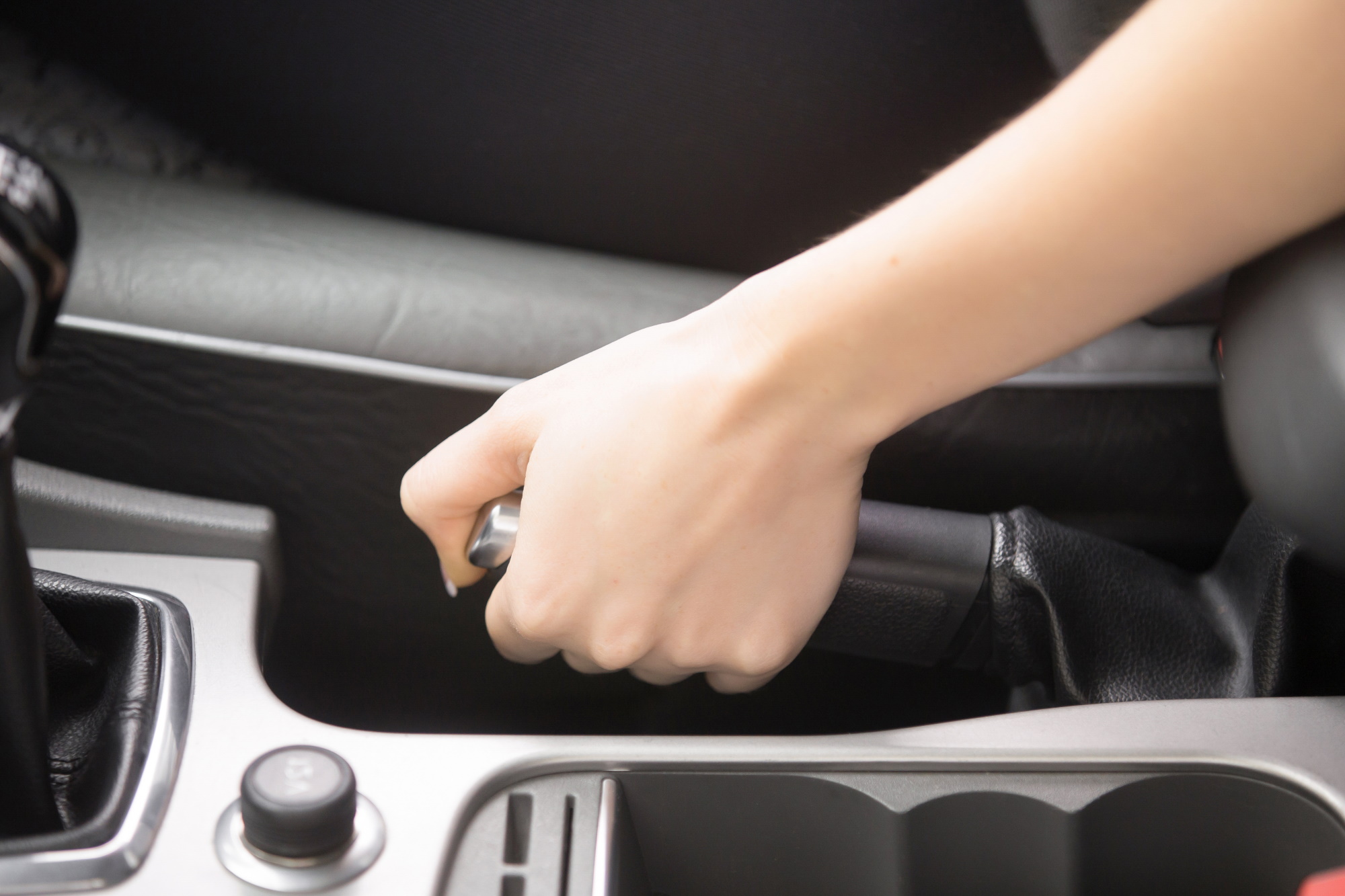

In a manual transmission, leaving the car in first gear (or in reverse if pointing downhill) is also advised, as the engine will prevent the car from rolling if the parking brake fails. Similarly, on a downhill gradient, the front wheels should face the curb for the same reason, and the wheels should face to the right on an uncurbed road regardless of orientation. This would prevent the car from rolling into the roadway by using the curb to block the front passenger tire in the event of a parking brake failure. When parking on an uphill gradient, it is recommended that the front wheels face away from the curb. In manual transmission vehicles, the parking brake can be engaged to help keep the vehicle stationary. However, it is recommended to use it, as the parking pawl in the gearbox could fail due to stress or another vehicle striking the car, causing the car to roll. While most automatic transmission vehicles have parking brakes, it is often not engaged by American drivers when parking. The mechanism may be a hand-operated lever, a straight pull handle located near the steering column, or a foot-operated pedal located with the other pedals. In most vehicles, the parking brake operates only on the rear wheels, which have reduced traction while braking. Parking brakes often consist of a pulling mechanism attached to a cable which is connected to two wheel brakes. In road vehicles, the parking brake, also known as a handbrake or emergency brake ( e-brake), is a mechanism used to keep the vehicle securely motionless when parked.


 0 kommentar(er)
0 kommentar(er)
